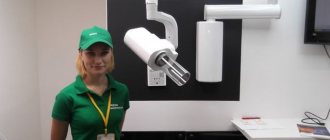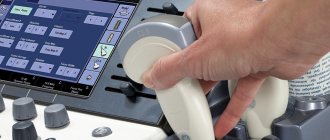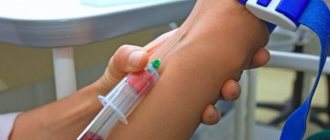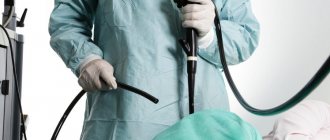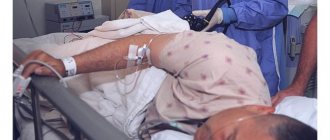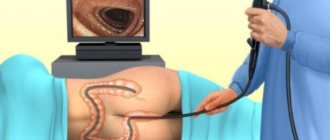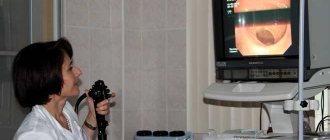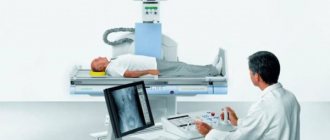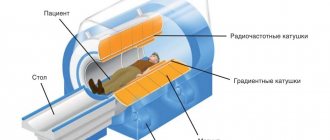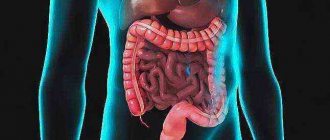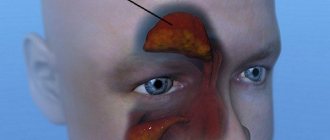Diseases of the digestive system do not choose the patient’s age. In pediatrics, they rank second in prevalence after respiratory diseases. Such complex types of examination as colonoscopy are performed for children much less frequently than for adults and only for reasonable indications.
It is difficult to calm and convince the baby that the procedure is advisable, so the examination requires anesthesia. Parents are involved in preparing the child. The quality of the result depends on the correct fulfillment of the requirements.
Features of intestinal pathology in childhood
Colon diseases, unfortunately, are not uncommon in children. They can be either congenital or acquired.
Megacolon
The most common is a giant large intestine - megacolon. The cause of the disease is damage to the nerve nodes of the intestinal wall due to diseases of the nervous system and intoxication. The disease can develop at any age. As a result, paralysis and atony of the circular muscles occur. This is a serious pathology.
As a result of impaired peristalsis, constant stagnation occurs, the absorption of nutrients is disrupted, a bacterial infection occurs, and toxins are formed. The whole body suffers: exhaustion, general underdevelopment occurs, and the baby is easily susceptible to infections.
Hirschsprung's disease
Unlike megacolon, the cause of Hirschsprung's disease is the underdevelopment or absence of nerve ganglia (ganglions) in the wall of the colon - congenital aganglionosis. As a rule, only the sigmoid colon is affected and very rarely other parts. The pathology manifests itself already in the neonatal period, and its first sign is the absence of meconium within 2 days after birth.
The manifestations of the disease and its consequences are similar to those with megacolon; without timely treatment, severe changes quickly occur in the child’s body.
Inflammatory diseases
As in adults, inflammation of the colon is common in children - acute and chronic colitis, including ulcerative colitis and Crohn's disease. They are based on disorders of the immune system and hereditary predisposition.
Their symptoms are severe, and treatment is complex and lengthy, and not always effective. Much depends on early detection, in which colonoscopy plays a huge role.
Polyps
Benign growths on the intestinal wall in children, as a rule, are hereditary. Multiple polyps are polyposis, which is often included in the symptom complex of another congenital pathology. Polyps are dangerous because they can bleed, cause intestinal obstruction, and degenerate into cancer.
At what age is a pediatric colonoscopy performed?
Considering the high probability of developing intestinal pathology in young children, including congenital diseases, if they are suspected, a colonoscopy is prescribed to a child regardless of age, including the early period.
Of course, the method itself has limited use in children, since for them it is traumatic both physically and psychologically. The study is carried out only in cases where there is no other alternative, plays a decisive diagnostic role, and we are talking about the health and life of the baby. Therefore, colonoscopy can be used even during the neonatal period.
Practical proctology: colonoscopy – a modern diagnostic technique
Before the invention of the colonoscope and the development of a modern diagnostic method for examining the colon, colonoscopy, proctology was not able to diagnose many intestinal pathologies. Previously invented and used radiography did not make it possible to recognize many diseases, including polyps, tumors, etc. Therefore, sometimes it was necessary to resort to surgery in order to confirm or refute the diagnosis if severe intestinal pathology was suspected.
To examine the colon, doctors used rectosigmoidoscopes, which allowed them to “look” only 30 cm deep into the intestinal tract from the anus.
The invention of the flexible fiberscope (endoscope) was a kind of revolution. It manifested itself in 1961, when the first flexible fiberglass gastroscope went on sale.
And a year later, a new light source was developed for him, which did not heat up, which greatly facilitated the examination.
In 1966, the first fiber colonoscope with a camera appeared.
Practical proctology experienced an incredible rise in the late 60s of the last century; colonoscopy simplified the diagnosis of such formidable pathologies as adenocarcinoma, Crohn's disease, etc.
Later, a video endoscope was developed. Thanks to a miniature video chip, it made it possible to obtain high-quality endoscopic images.
Virtual colonoscopy, which is based on multislice computed tomography, allows you to obtain images in three dimensions. It has been made in our country since 2007.
Modern endoscopic examination of the colon, along its entire length, is the most effective diagnostic method. It allows you to identify up to 90% of human colon defects. Particularly informative regarding pathologies such as:
- nonspecific ulcerative colitis;
- neoplasms (benign and malignant);
- Crohn's disease, etc.
Due to the fact that the colonoscope has special channels, with the help of a functional set of tools, an endoscopist specialist, if necessary, carries out important therapeutic measures. They are a minimally invasive alternative to major surgery.
Today, in developed countries of the world, it has become a completely common research used for the prevention of diseases and the treatment of some of them. As modern proctology prescribes, colonoscopy in the USA is a mandatory procedure for people over 45 years of age, in Germany – over 47 years of age.
If a specialist in Russia recommends this diagnostic examination, then there are indications for it. You shouldn’t refuse or procrastinate, wondering for years whether to have a colonoscopy.
Unfortunately, today in Moscow it takes almost a year (on average) from the moment the first symptoms of colorectal cancer appear until an accurate diagnosis is made. For comparison, in Germany, diagnosis of colon tumors takes from 3 months to six months.
According to statistics, for every thousand adult citizens of Russia, 287 people have coloproctological pathologies. Moreover, about 35% suffer from two or more intestinal diseases at the same time. Colon adenocarcinoma is most often registered between the ages of 40 and 60 years, and in total, colon cancer is diagnosed in 6% of the population during a lifetime. By undergoing a colonoscopy at the beginning of the critical period, it is possible to identify pathology in the early stages and begin treatment in a timely manner.
Every fifth diagnostic procedure turns into a therapeutic one, since the doctor removes detected polyps during the examination. This saves the lives of many patients. A colonoscopy done at a time when the tumor is small and can be removed during screening is better than a real operation, long-term treatment, and sometimes the most tragic outcome.
Indications and contraindications for colonoscopy
There are a number of indications for colonoscopy in children.
- The presence of mucus and blood in the stool.
- Enlargement, bloating.
- Weakening of peristalsis, retention of stool and gases.
- Alternating constipation with diarrhea.
- Rapid deterioration in the child’s general condition: anemia, weight loss, lethargy.
- Suspicion of colon pathology in the presence of clinical symptoms and hereditary predisposition (for example, polyposis).
The study cannot be carried out in cases where it may harm the health of a small patient:
- If you have symptoms of an “acute abdomen” - severe pain, tension in the abdominal muscles, symptoms of acute intestinal obstruction.
- In case of acute intestinal inflammation.
- For any acute infectious diseases.
- Children with pathologies of the circulatory, respiratory, liver, kidneys, and central nervous system.
- With a decrease in blood clotting.
Indications for the study and the possibility of conducting it are determined by a specialist after a thorough examination and carrying out the necessary additional studies - laboratory, ultrasound, tomography. A pediatric specialist - gastroenterologist, proctologist, surgeon, oncologist - can refer you for a colonoscopy.
Colonoscopy in adults
Colonoscopy is a fairly popular medical examination, which is the basic method for diagnosing colon pathologies. It is carried out if there are certain indications.
The best experts recommend that everyone over 50 years of age undergo it in order to exclude possible serious pathologies of the large intestine, primarily malignant tumors. Indeed, according to world statistics, colon cancer occurs quite often in the world's population, accounting for about 7% of all cancers, and in the age group over 55 years, the likelihood of developing adenocarcinoma and other types of colon cancer increases to 25%.
To the question: “should I do a conoscopy?” – medical statistics also answers. Screening studies using this diagnostic method allow, on average (in people of all age groups), to detect a colon tumor in every fourth patient.
If a person is included in one of the risk groups, for example, he has a hereditary predisposition to colorectal cancer, he should undergo a preventive colonoscopy 10 years before reaching the age at which a relative was diagnosed with cancer.
There is a misconception that colonoscopy is only required for men, and women can do without this examination. Often, even after a strong recommendation from a doctor, ladies think for a long time about whether to have a colonoscopy, and do not always decide to undergo the procedure. They are guided by the fact that colon cancer occurs more often in males.
Indeed, 8.6% of all cancer episodes in men are colorectal cancer. And this is 2.4% more than for women. But even among the fair sex, the statistics are disappointing. According to the Institute of Oncology of the Academy of Medical Sciences, although colon cancer is less common in women than in men among all neoplasms, malignant ones are detected in women in 38% of cases.
By having a colonoscopy done on time, you can prevent the development of serious pathologies by stopping the disease at the earliest stages. Therefore, women should follow the recommendations of specialists and be sure to undergo monitoring of the condition of the colon through colonoscopy after 50 years.
Features of preparing children for colonoscopy
Before a child undergoes a colonoscopy, it is necessary to carry out full preparation for it, which includes 2 activities - a special diet and bowel cleansing.
Dietary preparation begins 3-4 days before the test; foods that cause bloating and coarse insoluble fiber should be excluded from the diet:
- fresh vegetables and fruits, herbs;
- whole milk and dairy dishes;
- all legumes;
- white flour products, baked goods, confectionery products;
- fried foods, canned food;
- sausages, smoked sausages, hams, bacon;
- wheat, barley and buckwheat porridge;
- chips and other children's snacks;
- carbonated drinks.
In children under 2 years of age, the feeding habits do not include roughage, so only minor restrictions are introduced that need to be agreed with the pediatrician.
Colon cleansing involves taking a laxative the night before the test and a cleansing enema 30-40 minutes before the procedure. As a laxative, it is better to give children the safest drugs based on lactulose - Duphalac, Normaze . Their use is not recommended for children under 1 year of age. In any case, the choice of laxative should be agreed with the pediatrician.
Instead of a regular volumetric cleansing enema in children, it is better to use one-time microenemas - Microlax , they can be used at any age, even in newborns. Bowel movements begin within 10 minutes and are completely cleared within 20-30 minutes.
Proper preparation
Ensuring that the examination is highly informative and safe for children requires the organization of appropriate preparation aimed at reducing the risks of complications. At the same time, following the recommendations below can reduce the child’s discomfort, both psychological and physical. Recommendations for preparing for endoscopy include:
- Three to four days before the examination, the child’s diet is changed, completely removing durum wheat bread, legumes, cottage cheese, fatty dairy products, and various types of fruits and vegetables. All of these products remain in the colon for a long time and can lead to increased gas formation.
- Meals include poultry, fish and dairy products.
- On the day before the examination, the child is given a laxative medicine to cleanse the colon or is prescribed a double enema.
Children, like adults, need to cleanse their large intestines before the test.
- On the day of the procedure itself, you are allowed to drink only tea or low-fat broth.
- If bowel cleansing was carried out with an enema, 1-1.5 hours before the colonoscopy, the child is given a second cleansing enema, completely clearing the large intestine of food debris.
Limiting foods during preparation for endoscopic examination plays an important role, since a high-quality procedure is only possible with complete bowel emptying.
Following these recommendations makes colonoscopy safe even for the youngest children, improving diagnosis, and thereby having a positive effect on possible subsequent treatment.
The examination process and features of the examination in children
To perform colonoscopy in children, special flexible fiberoptic colonoscopes of smaller diameter and length are used, which are selected according to age.
Before the examination, sedatives and short intravenous anesthesia are given. After making sure that the patient is asleep and does not feel pain, he is placed on the couch on his left side with his legs bent and a video probe is carefully inserted into the rectum. In this case, periodic air pumping is carried out to expand the lumen of the intestine, make the passage of the probe safer and create better visibility.
Gradually moving the probe, the specialist examines in stages all parts of the colon: rectum, sigmoid, ascending, transverse and descending colon, cecum. Throughout the entire length, the video camera scans the lumen and the image is transmitted to the display.
The doctor assesses the condition of the mucous membrane, folding, shape and width of the lumen, identifies various pathologies - polyps, anomalies, ulcerations, inflammatory process. If necessary, a section of tissue is taken for histological examination. The duration of the procedure is from 15 to 30 minutes.
Purpose of the procedure
Colonoscopy is considered a common diagnostic test that is performed using an instrument such as an endoscope. Thanks to this procedure, it is possible to conduct a visual assessment of the condition of the mucous membrane and blood vessels, as well as identify various pathologies. With the help of colonoscopy, it is possible to promptly detect inflammatory processes in the intestines, hemorrhoids, malignant neoplasms, polyps and foreign bodies.
This procedure can be performed in childhood for both diagnostic and therapeutic purposes. In addition to research activities, this method allows you to perform local medical mini-operations, during which polyps and foreign bodies are removed from the colon and rectum. In addition, during colonoscopy, a small amount of tissue from the mucous membrane or the intestine itself can be collected for subsequent thorough histological examination. To obtain accurate results, before conducting the study, it is recommended to comply with certain preparations, which the attending physician will definitely tell the parents about.
Colonoscopy for children under anesthesia, types of anesthesia for children
As a rule, children undergo a colonoscopy under anesthesia to prevent injury and associated unpleasant consequences. It is quite natural for children to be afraid of the procedure; they are not able to control their reaction. Protest and excessive mobility arise involuntarily, which will not make it possible to conduct research. Therefore, children under 12 years of age must be given general anesthesia - a short, light anesthesia.
To put a child to sleep, the most convenient and safest method is intravenous sedation, for which 2 main drugs are used: midazolam and propofol. Midazolam completely “turns off” the child’s memory, but recovery from sedation takes longer.
Propofol eliminates pain, relaxes muscles, but can leave memories of the study, so it is recommended for older children.
The type of anesthesia is determined by the anesthesiologist, taking into account the age and health status of the child. Colonoscopy for children under anesthesia is performed in many clinics - public and private; its price varies from 3,500 to 9,000 rubles, depending on the rating of the clinics, the technologies and equipment used, and the distance of the clinic from the city center.
Possible complications
If the rules for preparing the child are violated or if the technique for performing the endoscopic examination itself is not followed, complications may arise:
- Allergic reactions to medications used for general anesthesia.
- Damage to the mucous membrane and other layers of the colon wall.
- Intraintestinal bleeding of varying degrees of intensity, depending on the damage to the vessels of the mucous layer or deeper layers.
- Perforation of a hollow organ with the development of peritonitis and systemic complications.
If such complications develop, the procedure is stopped and immediate treatment is started.
Modern colonoscope
Colonoscopy in pediatrics is an indispensable method for identifying diseases of the large intestine associated with abnormalities in the development of the organ or with a tumor process. The high degree of information content and the possibility of performing a biopsy allow the procedure to be used even in difficult diagnostic situations, when other research methods have failed to identify the disease.
